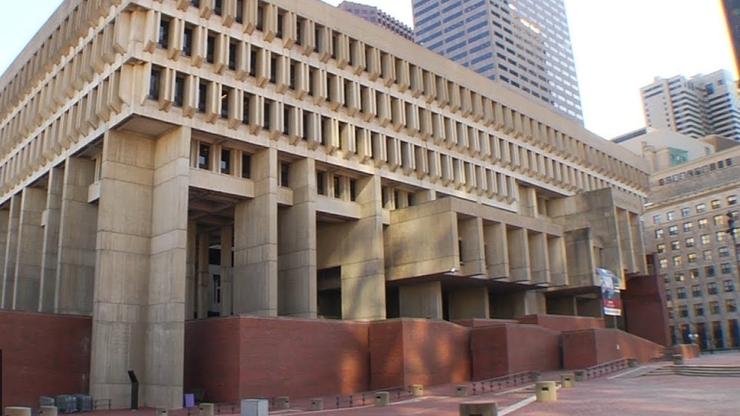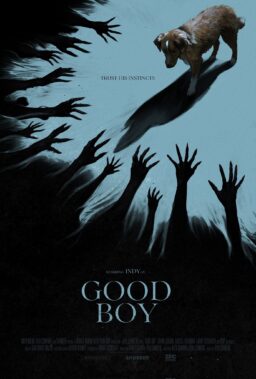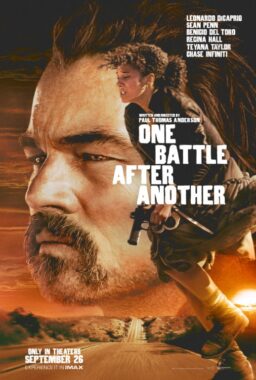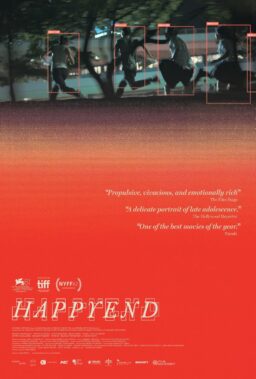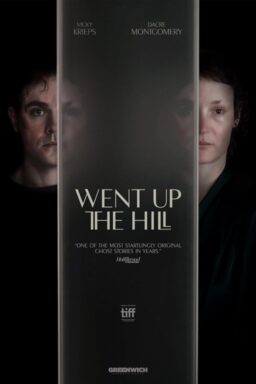During the New York Film Festival’s 58-year history, documentaries have never enjoyed the prominence of narrative auteur films, a secondary role reflected in their shifting place in the proceedings. In the early years, when the festival had few if any sidebars, they were occasionally included in the Main Slate. Later, as festival breakouts like 1994’s “Hoop Dreams” became arthouse hits, the visibility of documentaries grew steadily, to the point that, in recent times, they were given their own section in the NYFF: Spotlight on Documentary.
This year, whether reflecting the exigencies of this pandemic year or a permanent change, there is again no separate documentary sidebar. But there are some very noteworthy documentaries in the festival overall. Of the three discussed below, the first two are in the Main Slate, the other in a grab-bag section called Spotlight.
If there were a Mount Rushmore of American documentarians, one of the granite heads would have to be that of Frederick Wiseman, a pioneering veteran who remains a singular force in nonfiction filmmaking. Unlike other practitioners of fly-on-the-wall, no-commentary/no-interviews documentaries who emerged in the ‘60s and after, Wiseman was not part of any school or group. Since his breakthrough with “Titicut Follies” in 1967, he has gone his own way, carving out a remarkable career crafting dozens of incisive group portraits of people and (mostly American) institutions in films such as “High School,” “Basic Training,” Juvenile Court,” “Public Housing” and “State Legislature.”
Wiseman’s films, which often have long running times, are obviously labor-intensive, and the fact that he does much of the labor himself makes them monuments of Yankee diligence and industry. The conversion to digital technology must have been a true godsend to him, as it was to other documentarians. Instead of shooting short rolls of 16mm film, as he did in the early years, he can now film digitally for hours at a time, an advantage reflected in the extraordinary, capacious recent films “At Berkeley” (2013), “National Gallery” (2014), “In Jackson Heights” (2015) and “Ex Libris: The New York Public Library” (2017).
Now 90 and still going strong, Wiseman is a NYFF regular whose new, four-and-a-half-hour “City Hall” resembles the expansive films just named but is different in one way: it’s the first he’s made about his hometown, Boston. You might say that gives the film a somewhat warmer, more affectionate air than typical for the usually distanced, carefully dispassionate filmmaker, and “City Hall” emerges as one of Wiseman’s greatest films in part for that reason. Yet it’s also as fastidious, intelligent, and all but encyclopedic as any of his previous real-world epics.
Wiseman films always have their share of vivid characters, but “City Hall” is the rare one to contain a figure who might be considered its hero or protagonist. That would be Mayor Marty Walsh, who sports a note-perfect Bahstahn accent and points to his Irish heritage as connecting him to the many immigrant communities contained in his city. For any New Yorker who’s lately been stewing over the ridiculous, endless pissing match between our mayor and governor, it’s refreshing to encounter a political leader as humble, dedicated and focused on the common good as Mayor Walsh appears to be.
Wiseman’s film unveils City Hall as the central hive in Boston’s functioning. We look into numerous meeting rooms where officials, city employees and citizens discuss an array of issues and operations, ranging from the budget to trash collection to police deployments for a Red Sox victory parade. (Walsh proudly notes that such parades are held nearly every year.) If such dry, formal activities sound boring, you’ve never seen a Wiseman film. The calm intentness of the filmmaker’s gaze, and his way of finding interest in the most mundane details of institutional life, give the movie a fascination that’s often revelatory. Also, Wiseman films always have structures that make them more comparable to symphonies than, say, to nonfiction prose, and watching their meaningful patterns emerge is one of the viewer’s many pleasures.
One thing always worth contemplating in Wiseman films is that the people we see are usually performing, in two senses. For one, they are performing for each other, making a public case for this or that. Meanwhile they are also performing for Wiseman’s camera, even if most at least try to seem unconscious of that (an exception here are cops who look like they’d rather be on the beat rather than standing at attention in City Hall). Since there are effectively no private moments in Wiseman films, we are given the tantalizing task of speculating on the thoughts and feelings that might lurk behind outward public expressions.
This is especially involving in “City Hall” given what emerge as the film’s central thematic threads: issues of diversity and inclusion. These concepts are discussed in numerous meetings, by a spectrum of people from the government and citizenry, to the point that they come to seem the overriding concern in civic Boston. Not surprisingly, there are no voices raised against the concepts. Everyone seems to see diversity and inclusion as noble, necessary goals. There’s no discussion of whether to pursue them, only how.
This aspect gives “City Hall” a more overtly political edge than most Wiseman films have. Yet it’s one that might provoke interesting discussions from various points on the political compass. For conservatives, “diversity and inclusion” here might seem like obligatory mantras pushed on the body politic by the forces of multi-culturalism and political correctness. From a more liberal angle, they look more like efforts that are needed and essential due not only to Boston’s troubled racial past but also to the increasing ethnic complexity of its current population.
Though Wiseman doesn’t tip his hand, it’s easy enough to guess that his own sentiments lean toward the latter reading. Yet diversity and inclusion aren’t just ideals boosted over others in “City Hall.” In a way, they seem more like glue that helps bind the different elements in a city government that, in this film, appears to be extraordinarily well-functioning, especially compared to our current national situation. (Beantown residents who disagree with the film’s assessment are free to say so in the comments section.) In this year especially, it’s heartening to meet a mayor who says he has tried to “put social justice at the heart of our conversation.”

If making a film about one’s hometown is unusual for Wiseman, it’s anything but for Jia Zhangke, the greatest and most internationally renowned of China’s “Sixth Generation” directors. Jia’s 1997 debut feature “Xiao Wu” (which played in the NYFF’s Revivals section) took place in his native Fenyang, in Shanxi Province, and the filmmaker has returned to the area in other narrative films including “Platform” and “Mountains May Depart.”
Cultural memory and the often-difficult course of change in modern China, especially for ordinary Chinese, are recurrent subjects for Jia, and they return in the new documentary “Swimming Out till the Sea Turns Blue.” Inspired by a literature festival in Shanxi Province, the film focuses on three established, middle-aged writers, but it includes the recollections of various interviewees, and these tell a collective tale that stretches from the 1940s, when war gave way to a Communist government that gradually endeavored to pull rural people out of poverty with the new farming techniques and by banning traditions like arranged marriages, to the present day.
As the tale moves through the decades, the Cultural Revolution is glancingly mentioned when we here of people being sent away for “reeducation,” but the horrors and massive cultural destruction of that period are largely unaddressed, as are the genocidal starvations experienced under Mao Zedong. It would be interesting to know if Jia skirted such subjects fearing official censure, or if he simply wanted to focus closely on the lives and viewpoints of writers rather than invoke large political issues that could overshadow his protagonists.
Sometimes the memories verbalized here recount momentous events. Jia Pingwa, one of Jia’s threesome (and no relation, it appears), recalls the time after the Cultural Revolution when China began to open up to the world and translations of books by Western authors started to appear along with works by artists like Picasso. From the astonishment still evident in his voice, you can tell what a major shift this marked, perhaps especially for writers and artists.
Other recollections are more personal. The most colorful of Jia’s trio, burly, gregarious Yu Hua, tells of becoming a dentist but then realizing he couldn’t stand looking into people’s open mouths all day, so he started writing short stories. He also recalls the time when initial success earned him a trip to see an editor in Beijing, and he was so wonderstruck by the city that he stayed for a month, a country boy suddenly aware of the wider world.
The third writer, Liang Hong, recalls the hardships her family suffered and the way poverty forced her to stand outside the local school for a month because her parents couldn’t afford the $6 tuition. Liang and Yu are both successful writers who today live in Beijing, but hearing of their work brings to mind American authors like William Faulkner and Thomas Wolfe, who invariably looked homeward for their richest material.
Apart from insane interruptions like the Cultural Revolution, China has always revered the written word and its artists, and in this leisurely paced, quietly moving film, Jia pays tribute to writers who connect modern urban culture to its provincial roots, and the current era to one that’s quickly being lost to living memory.

Though seemingly a natural DVD extra, “Hopper/Welles” turns out to be a two-hour feature that’s more entertaining and watchable than you might expect. Shot in 1970 and intended to provide footage for Welles’ long lost and recently resurrected “The Other Side of the Wind” (shown at the 2018 NYFF), the film gives us an extended, impromptu colloquy between the auteurs of arguably the two most impactful debut American films ever: Orson Welles, whose “Citizen Kane” effectively launched modern cinema, and Dennis Hopper, whose enormously successful “Easy Rider” force-marched the movie industry into the era of the New Hollywood.
To make “Hopper/Welles,” Hopper took a break from editing his “The Last Movie” (a sophomore effort as ill-starred as Welles’ “The Magnificent Ambersons”) in Taos and came to Beverly Hills to allow Welles to interview him, a conversation aimed at plugging into the theme of the old Hollywood colliding with the new in Welles’ “The Other Side of the Wind”.
The film plays like a very casual interview, one filmed in a dark living room fitfully illuminated by hurricane lamps. We never see Welles, who remains off-screen lobbing questions, thoughts and arguments at Hopper. For his part, Hopper, wearing a cowboy hat and jeans, chain-smoking and drinking gin and tonics throughout, seems relaxed and engaged, not overly impressed with his legendary interlocutor but not too impressed with himself either.
The conversation is unstructured and free form, as you might expect. Hopper, clearly a cinephile smitten with European art cinema, talks about the impact films like “Viridiana” and “La Notte” had on him. He also complains about the tabloid press and about some of the puzzling reactions “Easy Rider” elicited. Welles, speaking about moviemaking and the industry in general, is unsurprisingly caustic and world-weary. The talk meanders here and there, and sometimes turns back on itself, but it’s never less than interesting.
Two things surprised me about the film. One is how visually beautiful it is, which helps hold the viewer’s attention. Cinematographer Gary Graver shot with handheld cameras, viewing Hopper from countless angles, and the constant visual movement together with the unusual lighting, make for a grainy black and white image that’s endlessly captivating.
The other surprise is Hopper, how focused and lucid he is here. Like many people, my mental image of the guy owes lots to the stoner of “Easy Rider” as well as the raving loonies of “Apocalypse Now” and “Blue Velvet.” These are performances, I know, and he was a brilliant actor, but the notorious tales of “The Last Movie” suggested they weren’t too far from the real guy. But here he’s smart, funny and not at all crazed. This guy could be headed for a great career, you think … and then you remember how quickly he and Welles went from Next Big Things to personas non grata.

